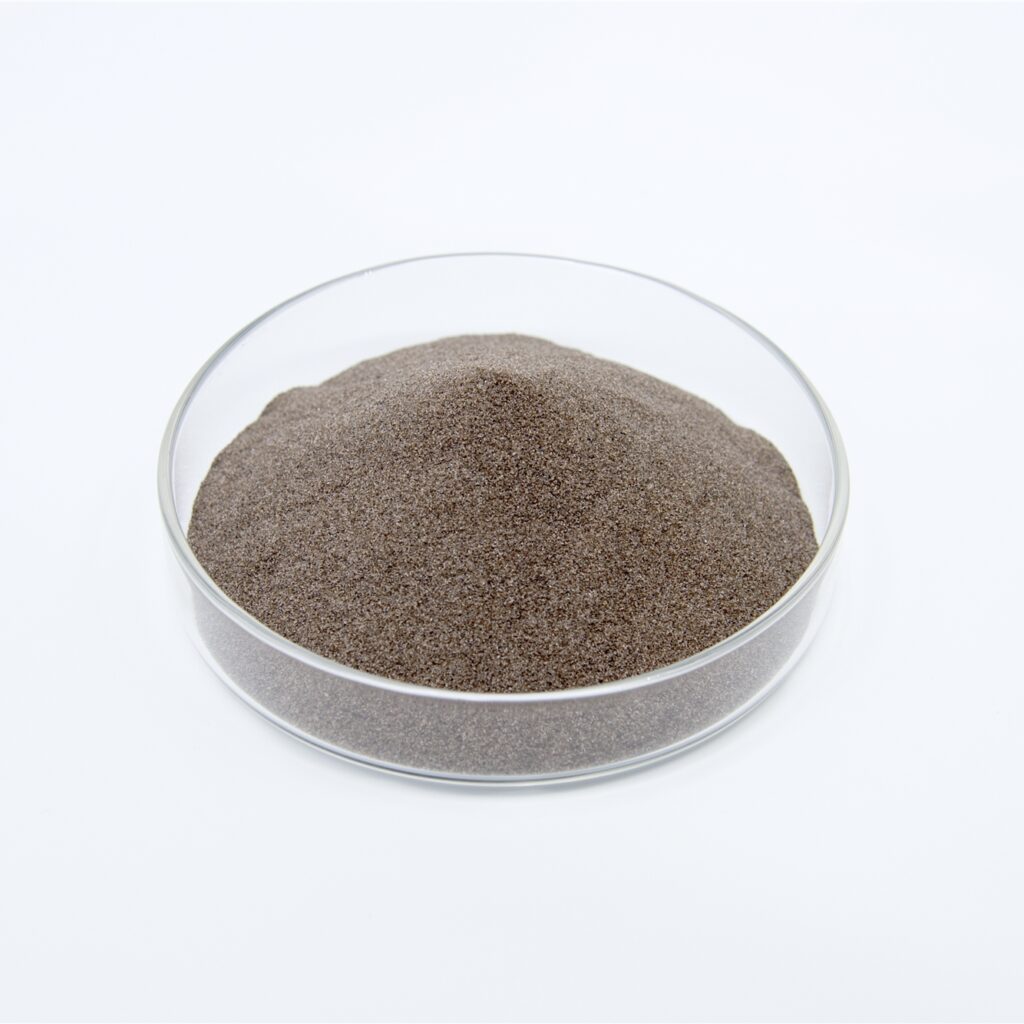What is Brown Fused Alumina (BFA)?
Brown Fused Alumina is a man-made abrasive produced by fusing a mixture of high-quality bauxite (an aluminum ore), carbonaceous materials (like coke), and iron filings in an electric arc furnace at temperatures exceeding 2000°C. The resulting material is primarily Aluminum Oxide (Al₂O₃), typically around 95%, with the remaining 5% consisting of silica, titania, and other iron oxides. These impurities give it its characteristic brown color.
| SIZE | AL2O3 MIN | SIO2 MAX | TIO2 MAX | Fe2O3 MAX |
| 12#-80# | 94.5-97% | 0.6-0.8% | 1.5-3% | 0.12-0.2% |
| 100#-180# | 93.5% | 0.7-1% | 1.5-3.8% | 0.15-0.25% |
| 240#-280# | 92% | 0.85-1.1% | 1.5-3.8% | 0.18-0.35% |
2. Key Properties and Advantages as an Abrasive
High Hardness: With a Mohs hardness of 9.0, it is second only to diamonds and silicon carbide. This allows it to effectively cut hard materials like carbon steel and alloy steel.
High Toughness: BFA has excellent toughness and resistance to impact. It fractures less easily than other abrasives, leading to a longer usable life and better cost-effectiveness for heavy-duty jobs.
Sharp & Angular Grains: The crushed grains are blocky and possess sharp edges, which result in fast cutting rates and aggressive stock removal.
Good Self-Sharpening: As the grains wear, they tend to fracture along cleavage planes, revealing new, sharp edges. This helps maintain consistent cutting performance throughout its life.
Reusable: Due to its toughness, BFA can be recycled and reused multiple times (typically 3-8 cycles depending on the application) in blasting operations.
3. Common Applications
BFA is primarily used for blasting (sandblasting), grinding, and surface preparation.
A. Blasting & Surface Preparation:
Heavy-Duty Descaling & De-rusting: Removing thick mill scale, rust, and weld slag from steel structures, ship hulls, and tanks.
Surface Cleaning: Preparing surfaces for coating, painting, or bonding by removing old paint, contaminants, and creating a clean, active surface.
Creating Surface Profile (Anchor Pattern): Its angular shape is excellent for creating a rough surface profile on metal substrates, which dramatically improves the adhesion of subsequent coatings.
“Scabbling” or “Topping” Concrete: Used to remove laitance and expose the aggregate for a non-slip surface or to prepare for a topping resin.
B. Grinding & Cutting:
Manufacturing of Bonded Abrasives: It is the primary raw material for reinforced grinding wheels and cutting-off wheels used for steel and high-tensile strength metals.
Coated Abrasives: Used in the manufacture of heavy-duty sanding belts and discs for metalworking.
4. Common Grit Sizes (For Blasting)
The grit size is measured in “Mesh,” indicating the number of openings per linear inch in a screen.
Coarse Grits (8/12, 12/20, 16/30): Used for aggressive cleaning of heavy rust, thick coatings, and creating a deep surface profile.
Medium Grits (20/40, 30/60): The most versatile and commonly used range. Ideal for general-purpose descaling, paint removal, and surface preparation before coating.
Fine Grits (60/80, 80/120): Used for finer cleaning, deburring, and creating a smoother surface finish.
Selection Tip: For most steel structure cleaning and coating preparation (e.g., according to SSPC-SP 10 / NACE No. 2), a 16/30 or 20/40 mesh is very common.


